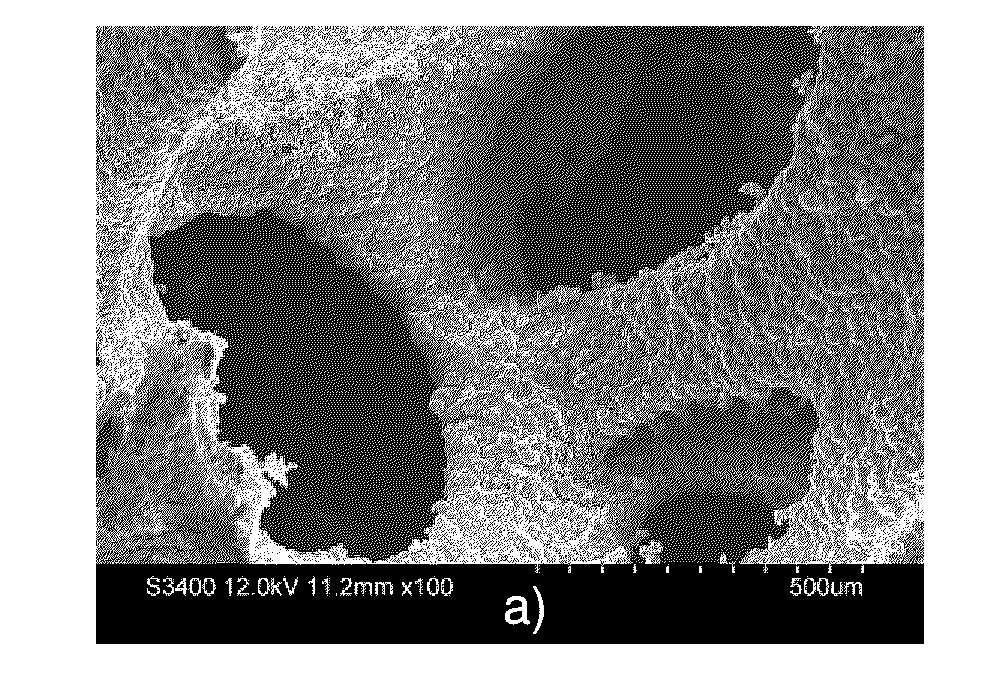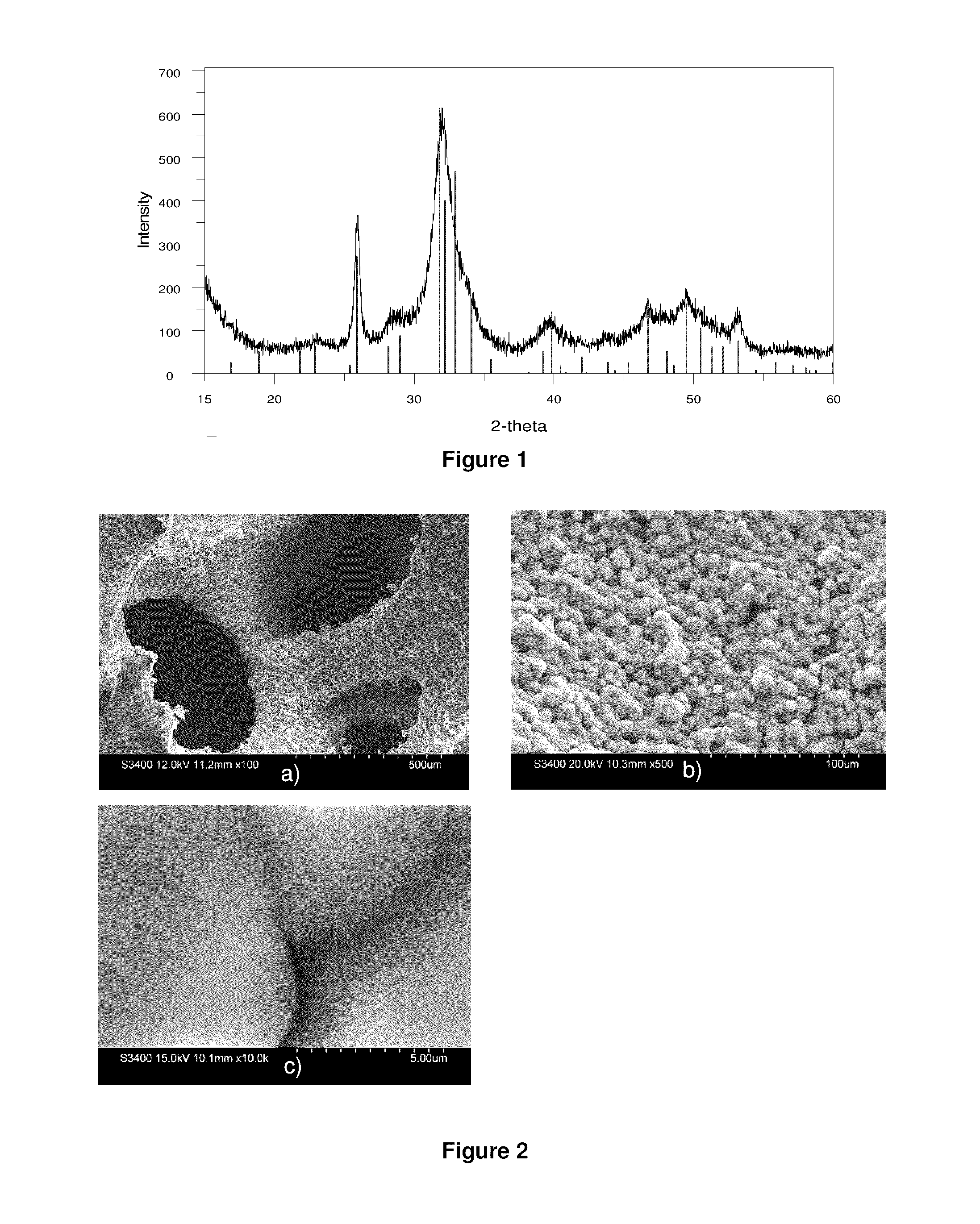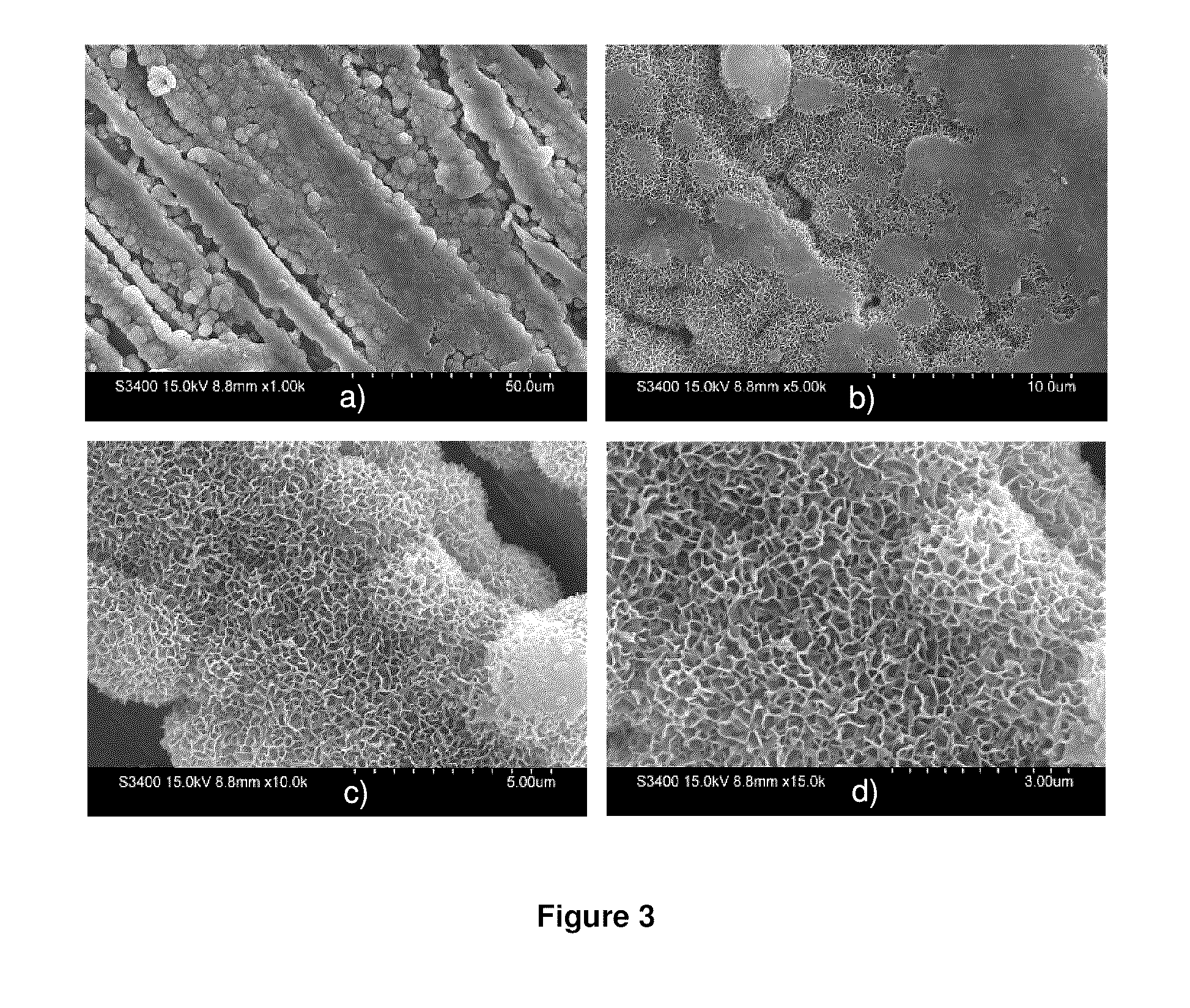Porous materials coated with calcium phosphate and methods of fabrication thereof
a technology of calcium phosphate and porous materials, applied in the field of methods of coating medical implants, can solve the problems of limited clinical effectiveness and use, early coating methods, electrophoresis methods,
- Summary
- Abstract
- Description
- Claims
- Application Information
AI Technical Summary
Benefits of technology
Problems solved by technology
Method used
Image
Examples
example 1
Preparation of Solution
[0098]Under stirring, chemicals were dissolved in 1 liter ddH2O the order as listed in Table 1 to provide a calcifying solution. Each chemical was added in sequence after the previous chemical had completely dissolved. While the sequence below is preferred, those skilled in the art will appreciate that the order of the first three chemicals may be varied.
TABLE 1Preferred Concentrations for Calcifying SolutionOrderChemicalConcentration Range (mM)1NaCl200.0-740.02CaCl2•2H2O 7-143HCl 5.0-15.04Na2HPO43.0-6.05NaHCO3 4.0-20.0
[0099]The prepared solution preferably has a pH value ranging from 6.2 to 6.8 and should be used for coating within 30 minutes of the addition of NaHCO3 (due to the rapid release of CO2 following the addition of NaHCO3). If preferred, the solution may be initially prepared without adding NaHCO3 and could be kept at room temperature prior to adding NaHCO3.
example 2
[0100]PLGA / CaP composite macroporous materials were fabricated according to the method disclosed in U.S. Pat. No. 7,022,522 (Example 10), which is incorporated herein by reference in its entirety.
[0101]1.0 g of scaffold cylinders were weighed and put into a plastic mesh bag. Depending on the coating thickness required, 300-600 ml calcifying solution was measured into a 1 L beaker with a stirrer. The mesh bag was completely immersed in the solution and immobilized. The beaker was sealed by an aluminum foil and two small holes with 1.6 mm diameter were created by a 16 G needle. The beaker was then placed in a 37° C. water bath, where the material was incubated under constant stirring at a rate of 200-400 revolutions per minute.
[0102]The bath temperature and stirring rate were maintained over one day. The coated scaffold was removed from the mesh bag and rinsed 3 times by ddH2O before being subsequently dried.
[0103]It was found that the coating thickness could...
example 3
Characterization of Coating by X-Ray Diffraction (XRD) Analysis
[0104]The calcifying solution was kept at 37° C. under stirring for 24 hours, in the absence of a scaffold or other substrate material. The resultant precipitate was filtered, rinsed by ddH2O and subsequently dried.
[0105]The produced white powder was collected and XRD analysis was conducted as shown in FIG. 1. The XRD patterns reveal that the product is composed of poorly crystalline hydroxyapatite (HA) similar to human bone mineral. Specifically, the peak at 25.81 2θ and between 31.7 and 33.1 2θ are characteristic of HA.
PUM
| Property | Measurement | Unit |
|---|---|---|
| temperature | aaaaa | aaaaa |
| temperature | aaaaa | aaaaa |
| thickness | aaaaa | aaaaa |
Abstract
Description
Claims
Application Information
 Login to View More
Login to View More - R&D
- Intellectual Property
- Life Sciences
- Materials
- Tech Scout
- Unparalleled Data Quality
- Higher Quality Content
- 60% Fewer Hallucinations
Browse by: Latest US Patents, China's latest patents, Technical Efficacy Thesaurus, Application Domain, Technology Topic, Popular Technical Reports.
© 2025 PatSnap. All rights reserved.Legal|Privacy policy|Modern Slavery Act Transparency Statement|Sitemap|About US| Contact US: help@patsnap.com



